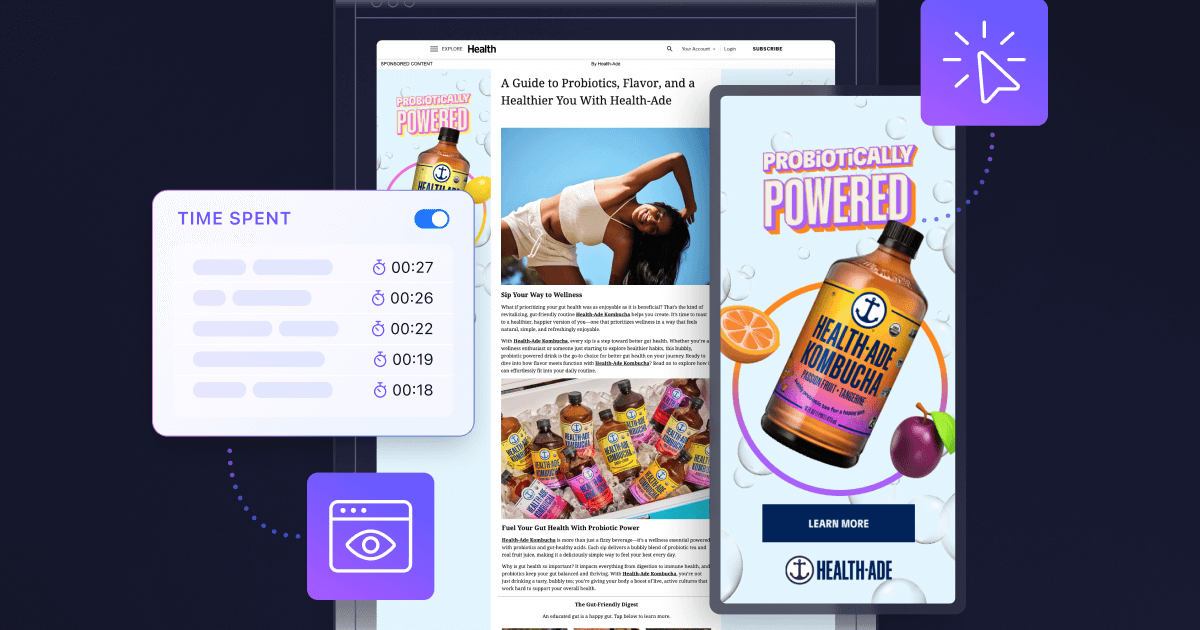Making Accessibility a Priority in Branded Content
.png)
Marketers have a lot to keep in mind when it comes to creating branded content, but the accessibility of that content must not be an afterthought. Ensuring that branded content is accessible to all has become an imperative for both ethical and strategic reasons.
As brands strive to connect with diverse audiences, making accessibility a top priority in content creation and promotion has emerged as a cornerstone of inclusive marketing. And yet, an analysis of the top 1 million homepages online detected 49,991,225 distinct accessibility errors—an average of 50 errors per page.
In other words, there’s a lot of room for improvement.
From designing user-friendly websites to crafting multimedia content that accommodates various needs, the commitment to accessibility not only aligns with ethical considerations but also positions brands at the forefront of a socially conscious and customer-centric landscape. In this blog, we’ll delve into the fundamental strategies that empower brands to embrace accessibility, fostering an environment where everyone, regardless of their abilities, can seamlessly interact with and derive value from the content they produce.
But first, let’s start with the basics.
What Is Accessible Content?
Accessible content refers to digital or physical content that is designed and presented in a way that makes it easily understandable, navigable, and usable by a diverse audience, including individuals with different abilities. The goal of creating accessible content is to ensure that everyone, regardless of their abilities or disabilities, can perceive, understand, and interact with the information effectively. This concept is particularly relevant in the context of digital media, websites, documents, videos, and other forms of communication.
Key characteristics of accessible content include:
- Perceivable: Information and user interface components must be presented in ways that are easily understandable, regardless of a user's sensory abilities. This includes providing alternatives for multimedia content, such as text descriptions for images and captions for videos.
- Operable: Users should be able to navigate and interact with the content using various input methods, such as a keyboard or assistive technologies. This ensures that individuals with mobility impairments or other challenges can access and use the content effectively.
- Understandable: Content should be clear and straightforward, with a consistent and predictable presentation. This benefits users with cognitive disabilities or those who may require additional time to process information.
- Robust: The content should be designed to work well with current and future technologies, ensuring compatibility with different devices, browsers, and assistive technologies.
Creating accessible content is not only an ethical (and sometimes legal) responsibility but also a strategic approach for businesses and organizations looking to reach a broader audience. Adhering to accessibility standards, such as the Web Content Accessibility Guidelines (WCAG), helps ensure that branded content is inclusive and usable by individuals with diverse abilities, contributing to a more inclusive and equitable digital landscape.
Accessibility and Branded Content
Making accessibility a priority in branded content is crucial for ensuring inclusivity and reaching a diverse audience. Here are some strategies that brands can adopt to prioritize accessibility:
Consider Your Owned Properties. Ensure that your website and digital platforms are designed with accessibility in mind. This includes using accessible color contrast, providing alternative text for images, and making sure that the content is navigable with a keyboard.
Captioning and Transcription: Provide captions for videos to make them accessible to individuals with hearing impairments. Additionally, transcribe audio content, making it available in text format, which benefits individuals who are deaf or hard of hearing.
Alt Text for Images: Include descriptive alternative text (alt text) for images on your website and in social media posts. This helps individuals using screen readers to understand the content of the images.
Readable Fonts and Text Sizes: Use clear, readable fonts and allow users to adjust the text size if needed. Avoid using small fonts or fonts with poor contrast that may be difficult for some individuals to read.
Ensure Keyboard Accessibility: Make sure that all interactive elements on your website or pages can be accessed and navigated using a keyboard alone. This is important for individuals who may not be able to use a mouse.
Provide Multiple Ways to Consume Content: Offer content in various formats to accommodate different preferences and needs. For example, in addition to video content, provide written summaries or transcripts.
Educate Your Team: Ensure that your content creators, designers, and developers are educated on accessibility best practices. This can include providing training on how to create accessible content and use accessible design principles.
By integrating these practices into your branded content creation process, brands can contribute to a more inclusive online environment and connect with a wider audience, ultimately demonstrating a commitment to accessibility and social responsibility.

.jpg)


